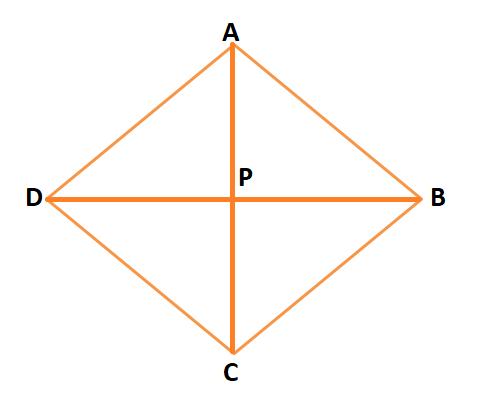The rhombus, often referred to as a diamond or a rhomb, is a geometric shape that belongs to the family of quadrilaterals. With its unique properties and symmetrical structure, the rhombus holds significance in mathematics, design, and various fields. Here are some basic facts and thoughts about the rhombus:
Understanding the Rhombus:
Definition and Characteristics:
A rhombus is a quadrilateral with four sides of equal length, where opposite angles are equal but not necessarily right angles. Its defining feature is that all four sides are congruent or equal in length. Moreover, its opposite sides are parallel, making it a special type of parallelogram.
- Properties:
- All angles in a rhombus are equal.
- Diagonals of a rhombus bisect each other at right angles.
- Diagonals of a rhombus are perpendicular and of equal length.
- The area of a rhombus can be calculated as half the product of its diagonals.
- Rhombuses can be classified as squares, which are a specific type of rhombus with all angles being right angles.
Visual Representation:
A rhombus often appears as a tilted square or a diamond-shaped figure.
In design and art, the rhombus is frequently used in patterns, mosaics, and tessellations due to its symmetrical and visually appealing structure.
Applications and Significance:
- Mathematical Concepts:
- In geometry, understanding the properties of a rhombus is fundamental for studying shapes, angles, and properties of quadrilaterals.
- The rhombus is an essential concept in geometry, serving as a basis for understanding parallelograms and their characteristics.
Engineering and Architecture:
Rhombuses are found in architectural designs, particularly in floor-tiling patterns and decorative elements.
In engineering, the rhombus’s structural stability and balanced properties find applications in designing stable frameworks and supports.
Art and Design:
The symmetrical and visually striking nature of the rhombus makes it a popular design element in art, logos, textile patterns, and various forms of visual art.
Thoughts on the Rhombus:
Symmetry and Balance:
The rhombus embodies symmetry and balance, which are key elements in both mathematics and design. Its equal sides and diagonals represent a harmonious equilibrium.
Versatility and Adaptability:
Due to its unique properties and versatile nature, the rhombus is adaptable in various contexts, allowing for diverse applications in different fields.
Educational Importance:
Understanding the rhombus is foundational in developing geometrical reasoning skills among students, enabling them to comprehend geometric principles and properties of shapes.
Artistic Appeal:
Beyond its mathematical significance, the rhombus’s aesthetic appeal contributes to its popularity in art and design, inspiring creativity and visual expression.
Conclusion
The rhombus stands as a geometric figure that intertwines mathematical principles with visual elegance. Its symmetry, properties, and versatile nature make it a valuable concept both in mathematics and in various practical applications across different domains. Understanding the rhombus contributes not only to mathematical proficiency but also to creative expression and appreciation in art and design.

